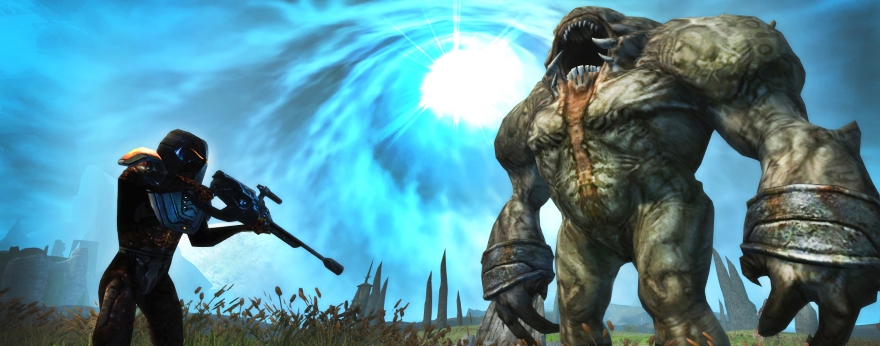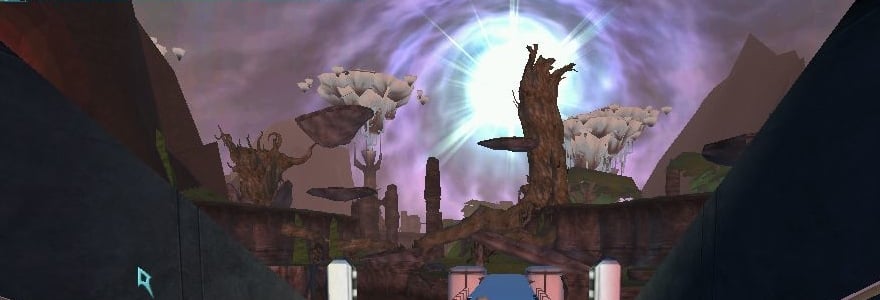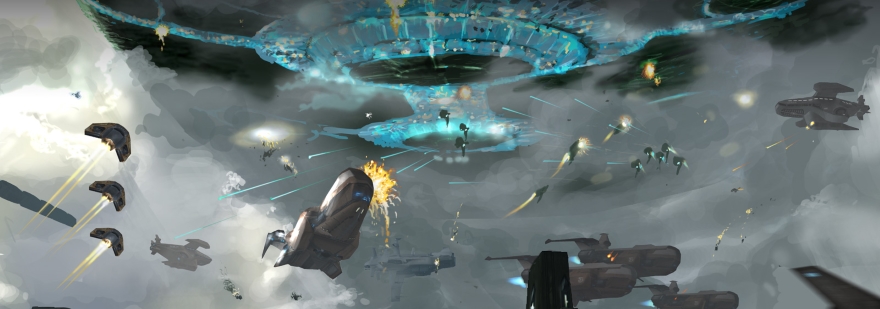
“The future in your hands.”
This was Funcom’s promise to gamers in the early days of the 2000s. Even as the MMORPG genre slowly took shape and grew in popularity, game studios were still babes in the woods, feeling out this brave and complex new world without a standard handbook to guide them to success. Every studio desperately hoped that it had the next big hook that would reel in gamers by the thousands, especially Norwegian developer Funcom, which made headlines in 1999 with its highly acclaimed adventure The Longest Journey.
Funcom took one look at the small but expanding MMO market, got together in a group huddle and decided to angle for a science-fiction game rather than a stock fantasy world. And thus, 15 years ago Anarchy Online hit the industry like a sack of interesting but broken features. It certainly wasn’t the stellar debut Funcom desired, yet after a rough start Anarchy Online carved itself out a niche which it’s been riding for some time now.
The year is 29475; the place is Rubi-Ka.
Sci-fi before it was the cool kid in the class
While I won’t go so far as to say that Anarchy Online was the first sci-fi MMO, it certainly was the first major MMO to branch out in that direction. A couple years after The Matrix and Star Wars: The Phantom Menace injected a healthy dose of sci-fi into the mainstream, Anarchy Online tantalized gamers with the prospect of going high-tech instead of high fantasy.
When asked why the Funcom team went sci-fi with Anarchy Online, Producer Colin Cragg said, “There are many of us who have always preferred laser guns to swords — this is one of the rare times that the laser gun fans won. I don’t know what sealed the decision at the time.”
The setting was a planet named Rubi-Ka, a hotspot of galactic business interests due to a precious metal known as “notum.” Omnipotent corporation Omni-Tek swooped in to mine the heck out of the planet, terraformed the surface, and imported a number of colonists (including player characters). However, Omni-Tek found itself butting heads with the Clans — rebel workers– with both groups struggling to figure out the deep mysteries of the planet and its unique resources.
Anarchy Online promised players the moon, with a huge selection of classes (12 at the start, with two more added later), worldwide PvP, dynamically-generated missions, and an ongoing four-year story. It was almost too much, as AO’s design reflected the complex, no-hand-holding attitude that other early 2000’s MMOs adopted. You could cripple your class without knowing what you did wrong, often not experiencing the reprecussions until much later in the game. Still, the hype for AO was huge, and over 100,000 players signed up for the beta. By some predictions, AO was positioning itself to be a serious rival to EverQuest.
“The worst launch of all time”
Of course, the best-laid plans fell apart when the game actually went live. Countless words have been penned on the subject of Anarchy Online’s botched launch, which was so bad that it became legendary. Whatever could go wrong on June 27th, 2001, did: The account system wouldn’t let players log in, the game would crash constantly, the lag and rubberbanding was horrible, servers went offline without warning, and patches were difficult to download.
“People love to talk about the bad launch,” Cragg said years later. “I prefer to think on it as a shining example of the level of dedication and love that was put into this game that many of those involved worked through those conditions and remained with the game for many years afterwards. I don’t think you will find many examples of closer-knit groups without looking to combat veterans.”
It wasn’t just the first couple days, either. Anarchy Online’s launch woes extended well into the first month, earning the title a black eye and nasty press that couldn’t be spun by Funcom’s PR team. The company frantically worked to patch up the game as it bled players and gave players two additional free weeks of play as partial compensation. Later that year, Funcom would make another attempt to woo players back with 30 more days of free game time.
Even so, AO’s reputation took a serious blow from the start — although fortunately for Funcom, it wasn’t a death blow. In fact, Anarchy Online picked up 150,000 subscribers in its initial year, no small feat for any MMO at the time.
The expansions
In my humble experience, individual MMOs tend to have a single defining expansion that looms above the rest, and 2003’s Shadowlands was that for Anarchy Online. Following a smaller “booster” expansion (Notum Wars), Shadowlands provided a completely new leveling experience as players had the option to explore a series of floating islands above Rubi-Ka. Inspired by Dante Alighieri’s trip through The Divine Comedy, Shadowlands offered a far more linear journey than players had seen previously.
Theme aside, Shadowlands added a stockpile of new content, particularly for character development. The level cap was raised to 220 (no, I didn’t add any extra numbers there), the Shade and Keeper classes were introduced, and nifty “perks” were added to the game as a sort of proto-talent tree. Player housing also made its first appearance, and there was much rejoicing.
Anarchy Online put on more expansion weight in the future, although nothing as comprehensive as Shadowlands. Alien Invasion (2004) and Lost Eden (2006) added player cities, alternate advancement, and better PvP. The last major addition to Anarchy Online, 2009’s Legacy of the Xan booster pack, beefed up the endgame considerably with new areas and raids.
Free play, free play, la la la la!
Anarchy Online made history in 2001 by being the first MMO to offer a free trial, which has since become a standard marketing gimmick for most all MMOs. In 2004, well before the free-to-play revolution, Funcom introduced a free model for AO that has carried on ever since. This free version offered players the full basic game and Notum Wars but none of the additional content (such as perks) that came with later expansions.
“The decision was of course financially motivated as it was started out in conjunction with the in-game advertising system,” Cragg said. “Free players generated money for Funcom by simply playing the game.”
There was a downside to hopping on board the F2P train before it was trendy. Free players were labeled “froobs” by the paying population, and while they were tolerated, some subscribers definitely looked at them as second-class citizens (or, hey, plain ol’ moochers). No matter what the community thought, the initiative was a success, netting over a million new free players by 2006.
 New look, same old game
New look, same old game
Going into its second decade, Anarchy Online took on the role of the grizzled veteran MMO that knew its place and was content to coast during its glory years. The game arrived on Steam a few years ago, boosting its population, and merged its two active servers into one.
Probably the most interesting development in the game was a long-promised graphical overhaul that would help to modernize the look of Rubi-Ka somewhat. After many delays and much talk, the update went into the game this past summer.
With Funcom in turmoil these days, Anarchy Online’s fate seems tied to whether or not the studio will endure. If so, here’s hoping that we’ll be celebrating AO’s 20th birthday in 2021!
 Believe it or not, MMOs did exist prior to World of Warcraft! Every two weeks, The Game Archaeologist looks back at classic online games and their history to learn a thing or two about where the industry came from… and where it might be heading.
Believe it or not, MMOs did exist prior to World of Warcraft! Every two weeks, The Game Archaeologist looks back at classic online games and their history to learn a thing or two about where the industry came from… and where it might be heading.

















